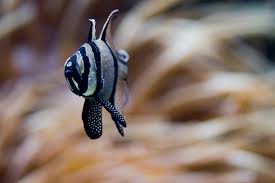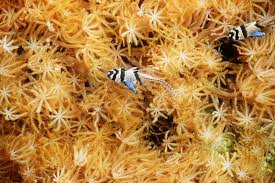Dragons in Stories of Enlightenment and the Founding of Great Dynasties in China
Dragons (龙 – Lóng) hold a profound place in Chinese history, mythology, and culture, often representing power, wisdom, divine authority, and the forces of nature. Throughout China’s long history, dragons have been deeply intertwined with the founding of great dynasties, symbolizing the mandate of heaven (天命 – Tiānmìng) and the enlightenment of legendary rulers. Many emperors were believed to have had dragon lineage or divine encounters with dragons, reinforcing their legitimacy and divine rule.
This article explores the role of dragons in Chinese stories about enlightenment, wisdom, and the rise of great dynasties, examining their presence in ancient myths, historical legends, and imperial symbolism.
1. The Dragon as a Symbol of Imperial Power and Enlightenment
A. The Dragon and the Mandate of Heaven
In traditional Chinese beliefs, a ruler’s legitimacy was granted by the “Mandate of Heaven” (天命 – Tiānmìng). This concept dictated that an emperor ruled as long as he governed with justice and virtue. Dragons were often depicted as heavenly messengers, signifying a ruler’s divine right to govern.
- Many dynasties used dragon symbols on imperial robes, palaces, and banners to reinforce the emperor’s celestial authority.
- Legends describe dragons appearing at key moments to signal the rise of an enlightened ruler or forewarn of a dynasty’s decline.
B. The Dragon as a Harbinger of Wisdom
Dragons were also seen as sources of wisdom and enlightenment, guiding rulers to govern with virtue, intelligence, and foresight. Some stories depict dragons as teachers of legendary rulers, imparting knowledge on governance, warfare, and philosophy.
- In Daoist and Confucian thought, dragons embody balance, harmony, and moral authority, essential qualities for a just emperor.
- The dragon’s connection to water and celestial realms signifies its ability to bridge the earthly and divine worlds, bringing enlightenment to rulers who seek guidance.
2. Dragon Myths and the Founding of Great Dynasties
A. The Yellow Emperor and the Dragon’s Ascension
The Yellow Emperor (黄帝 – Huángdì) is one of China’s most revered mythical figures, considered the ancestor of Chinese civilization. According to legend:
- The Yellow Emperor was born from a radiant dragon and possessed dragon-like wisdom.
- He unified warring tribes and laid the foundation for Chinese culture, governance, and innovation.
- At the end of his reign, he ascended to heaven on the back of a golden dragon, symbolizing his divine status and enlightenment.
This story cemented the dragon as a symbol of enlightenment, leadership, and celestial favor.
B. Yu the Great and the Dragon’s Blessing
Yu the Great (大禹 – Dà Yǔ), founder of the Xia Dynasty (夏朝 – Xià Cháo), is another historical figure associated with dragons.
- Yu was tasked with controlling the great floods that devastated China.
- A dragon guided him in creating an irrigation system, allowing him to save the people and establish order.
- Because of his wisdom and virtue, he was chosen as the first emperor of the Xia Dynasty, marking the beginning of dynastic rule in China.
This legend highlights the dragon’s role as a protector and a source of knowledge, aiding righteous rulers in shaping history.
C. The Founding of the Zhou Dynasty and the White Dragon’s Omen
The Zhou Dynasty (周朝 – Zhōu Cháo) was one of the longest-lasting dynasties in Chinese history, known for its strong philosophical and political foundations. According to legend:
- Before the rise of the Zhou Dynasty, a white dragon appeared in the sky, signaling the fall of the corrupt Shang Dynasty.
- The appearance of the dragon was interpreted as an omen that the Mandate of Heaven had passed to the Zhou rulers.
- King Wu of Zhou defeated the last Shang ruler, establishing a dynasty that emphasized moral governance, justice, and enlightenment.
This tale reinforces the dragon’s role as a divine messenger, announcing the rise and fall of dynasties based on virtue and righteousness.
D. The Dragon Emperor of the Han Dynasty
The Han Dynasty (汉朝 – Hàn Cháo) is often regarded as one of China’s golden ages. Its founding emperor, Liu Bang (刘邦), was said to be descended from a dragon:
- His mother dreamt of a dragon entering her womb, signifying that her child would be destined for greatness.
- After overthrowing the Qin Dynasty, Liu Bang became the first Han emperor, establishing a legacy of cultural and scientific advancements.
- The Han rulers fully embraced dragon imagery, making the dragon an official symbol of the emperor.
This story solidified the dragon as a divine ancestor of Chinese rulers, further enhancing its connection to enlightenment and destiny.
3. The Dragon’s Presence in Historical and Cultural Symbolism
A. Imperial Dragon Robes and Banners
- Only emperors were allowed to wear yellow dragon robes, as yellow symbolized the central power of heaven and earth.
- Dragon motifs on palaces, thrones, and imperial seals signified the emperor’s divine rule and responsibility to his people.
- During great ceremonies, dragon banners were raised to represent the ruler’s connection to cosmic forces.
B. Dragon Temples and Shrines
- Many emperors built dragon temples to worship the celestial forces that granted them power.
- These temples often included sacred dragon pools, where emperors performed rituals to seek wisdom, longevity, and protection.
C. Dragon Myths in Literature and Philosophy
- Confucius (孔子 – Kǒngzǐ) once compared himself to a dragon soaring through the sky, emphasizing his role as a bearer of wisdom.
- The Daoist classic, “Zhuangzi” (庄子), describes dragons as symbols of transformation and higher understanding, aligning them with philosophical enlightenment.
4. The Legacy of Dragons in Dynastic History
The belief in dragons as guiding spirits of emperors continued throughout Chinese history.
- Ming and Qing Dynasties – The dragon became the official emblem of imperial China, appearing on coins, documents, and official insignia.
- Modern China – While no longer associated with emperors, dragons remain a national symbol of strength and wisdom, seen in festivals, art, and architecture.
Even today, Chinese people refer to themselves as “descendants of the dragon” (龙的传人 – Lóng de chuánrén), reflecting the deep historical and cultural significance of dragons in shaping Chinese identity.
Conclusion
Dragons have played an essential role in Chinese myths and historical narratives, especially in stories of enlightenment and the founding of great dynasties. From the Yellow Emperor’s celestial ascent to Yu the Great’s dragon-guided flood control, these stories highlight how dragons symbolize wisdom, divine power, and imperial legitimacy.
Through imperial symbolism, philosophical teachings, and cultural traditions, dragons have remained a timeless emblem of enlightenment and leadership in Chinese history. Their enduring presence in Chinese culture continues to inspire pride, strength, and the pursuit of wisdom, making them one of the most revered symbols in China’s dynastic and cultural legacy.











